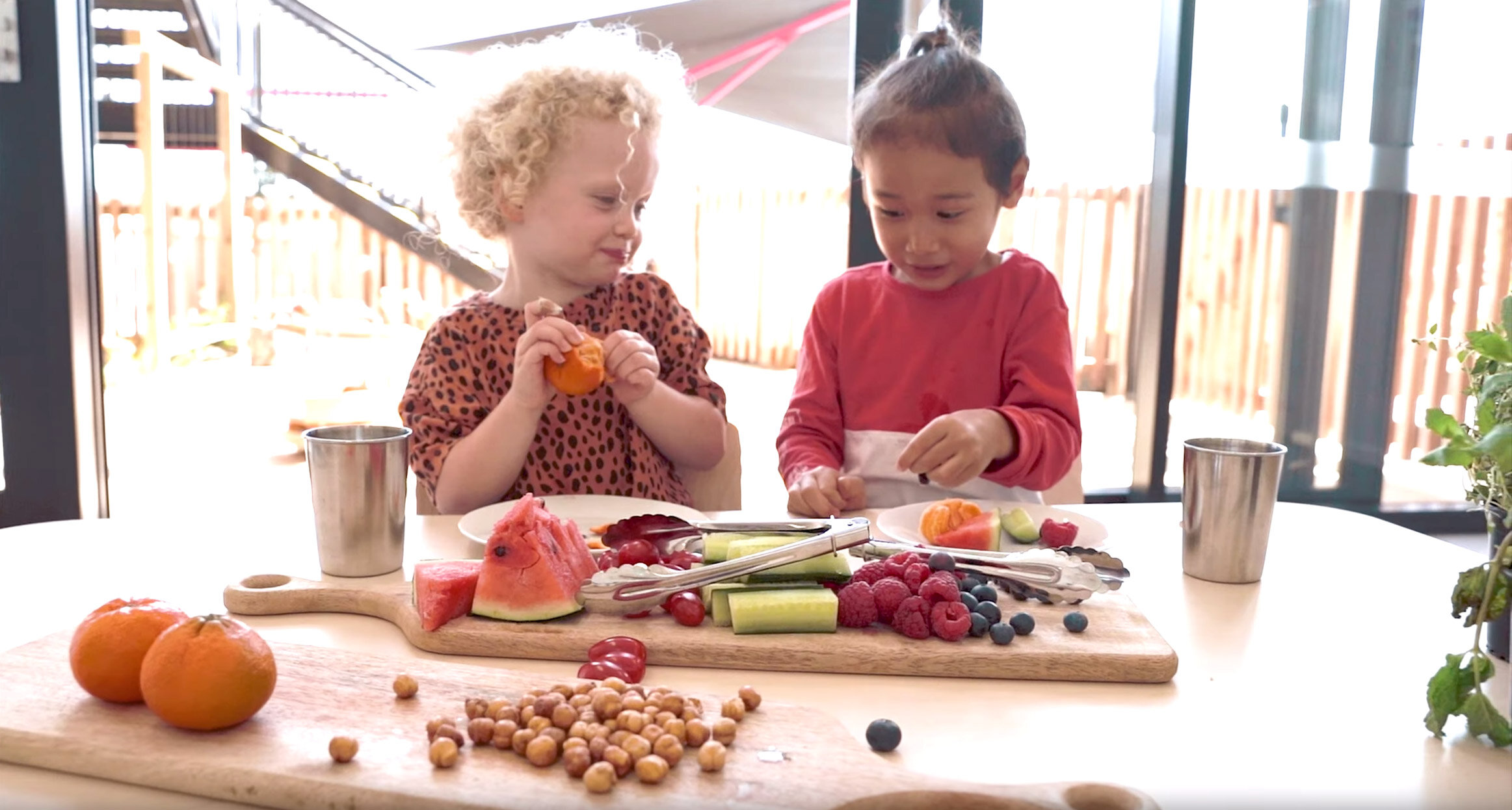Nurture the Joy of Eating
Our Nurture Food Philosophy, inspired by research.
Do you sometimes feel that enjoying harmonious meals are impossible with your young family? You are not alone in this feeling and it is completely normal for children to be fussy with food. How we react to this often defines a peaceful mealtime or a mealtime battleground.
Our Nurture Food Philosophy is inspired by the research of leading dietician Ellyn Satter and her ‘Division of Responsibility” in feeding. We focus on changing our mindset from ‘getting’ our children to eat, to valuing the time and space to partner with the children to teach a growth mindset* about food and eating. After all, we learn to eat, just as we learn to ride a bike or read a book. By using our knowledge of child psychology, we aim to develop the way our children think about and approach food in a positive manner.
As a parent (or caregiver), we provide the structure of mealtimes, support for the child's learning journey with food and opportunities to learn. The child chooses how much and whether to eat from what is provided. This ‘division of responsibility’ in feeding encourages the parent (or caregiver) to take leadership with feeding (thus providing for a young child's much-needed desire for security and safety), yet still allowing the child autonomy with eating (thus satisfying their much-needed desire for independence!). This guidance can be offered in response to the information received from the child - responsiveness.
Children eat in response to their body cues and can often be very intuitive of their needs, but it is easy for them to lose this skill through an expectation of what we think they should be eating.
Offer sitdown meals or snacks at regular intervals (no more than 3 hours apart as young children have small stomachs). The parent or caregiver chooses what will be served - providing the structure.
Offer a variety of choices, including some familiar and liked foods alongside some unfamiliar foods - providing opportunities to learn.
Serve real foods such as fruit, vegetables or cheese slices alongside ‘sweet’, ‘treat’ or ‘junk’ foods, or serve the child’s serving of dessert at the same time as their meal. (This neutralises perceived values on foods but also counteracts the effect on blood sugar levels.)
Allow them to choose what they would like to eat, from the choices you have decided to serve and in any order they like. Avoid commenting on their food choices at all as this pressure, whether positive or negative, is counterproductive - providing the support.
Exposure, exposure, exposure - continue making foods available even if it is ignored or bypassed. Eventually, the child will give it a go. Being around other people who are eating and enjoying eating is the most valuable tool in your feeding toolbox!
Children eat what they know! Some children need to sneak up on a new food and get to know it in their own space and time. Participation in food preparation, gardening, shopping, baking all contributes to their food literacy. When we offer the vocabulary to describe the sensory experiences, tastes, emotions and feelings that occur when we are around food we help them to make sense of their own food world
What we say and how we say it often sets the tone for a successful mealtime. Avoid making comment about the food or what they are eating. Instead, focus on encouraging good behaviour at the table. Here are some examples of supportive phrases that encourage their growth mindset.
“I am curious about new foods”
“I wonder what that tastes/smells/feels like”
“I can learn with more practice”
“I am curious about how to eat that food”
“I am learning to like it”

